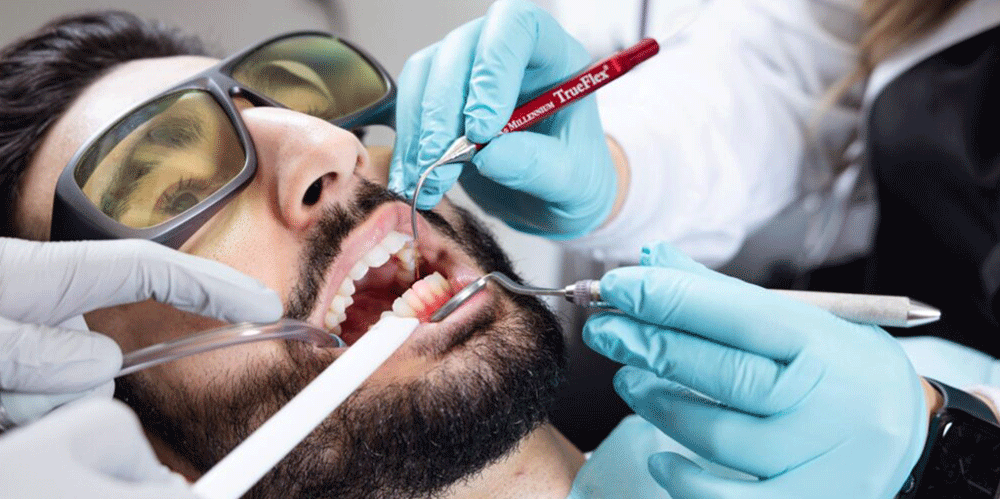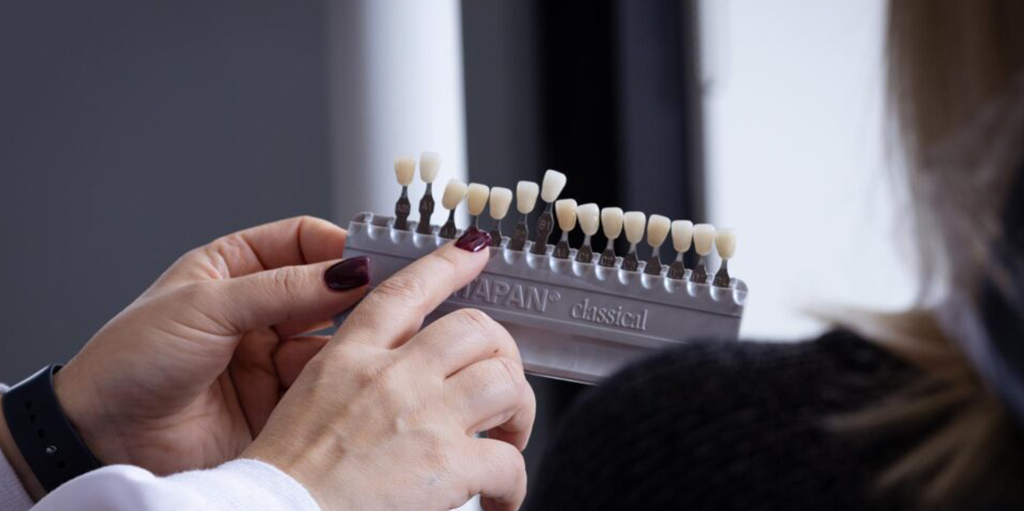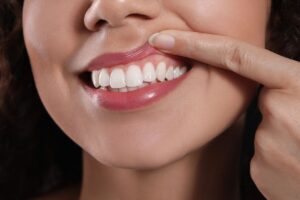When it comes to dental hygiene, many people think brushing alone and maybe gargling some mouthwash once in a while is more than enough to keep their oral health in shape. Others who are better informed know that this is certainly not enough! It is common knowledge nowadays that flossing is even more important than just brushing, so much so that quite a number of dentists are convinced that if one is to choose between brushing their teeth and flossing them, they should go for flossing. But is there a chance you’re doing this wrong?
Truth be told, studies show that many people floss their teeth in the wrong way. Even though flossing may seem like a very simple task to carry out there are certain dos and don’ts you shouldn’t consider when flossing your teeth, so here are five common flossing mistakes that you need to avoid in order to protect your oral health and keep up with your good hygiene.
Number 1 on The List of Flossing Mistakes: Flossing At The Wrong Time
The first and most important one on the list of flossing mistakes that most people make is flossing at the wrong time. And this has a lot of sides to it. Some people know that flossing once a day is enough and they stick to this, but they don’t know that this number is the bare minimum. It is recommended by a lot of dentists to floss twice a day to get the most out of your flossing. But when is actually the right time to floss? For now, let’s stick to the once-a-day strategy.
If you are to floss your teeth only once a day, the best time is at night right before going to bed. The reason behind this is that when you sleep, bacteria will have a much better and quieter time to help build up plaque and so damage your teeth more severely. That is why it is often recommended that if you are going to floss your teeth only once a day, it should be at night right before going to bed. Now are you going to carry out your flossing before or after brushing your teeth?
It has become a common practice for people to floss their teeth after they have brushed. However, this is wrong. If the chief aim of flossing is to remove the food remains and bacteria residing between the teeth and to get rid of them, then flossing after you’ve brushed means that you are going to remove all those harmful things and then leave them in your mouth as they are. However, if you floss first, and then brush your teeth what is going to happen is that the brushing will get rid of the bacteria that has been removed from between your teeth so you will have a cleaner hygienic mouth when you go to bed.
No.2: Not Flossing Both Sides of Your Teeth

The next one up on the list is not flossing the side of both teeth. As we mentioned before, if the chief aim of flossing is removing bacteria from between the teeth, it is important to get the work done for both adjacent teeth, but what does that even mean? Many people tend to put pressure on just one of the teeth, rubbing the floss between two adjacent ones while applying pressure on only one of the teeth.
Studies show that this method will result in you neglecting the hygiene of the teeth which you are not applying pressure. This will essentially mean that you have not cleaned one side of one tooth at all! Now, do we want that? definitely not!
Hence, the right way to do this is to apply pressure on both of your teeth when you get the floss in between two adjacent teeth. Avoiding this among other flossing mistakes is not only going to make you feel better, but it is also going to take things up a notch and help you maintain better oral hygiene.
No.3: Irritating The Gums
The next mistake people tend to make while flossing is flossing too hard and too deep so much so that it starts to irritate their gums. The first issue that arises from this is excessive gum bleeding, which is very unnecessary as it is not due to an illness or a disease, but rather due to poor technique. But that is not even the biggest issue here. Again going back to the roots, the reason we floss our teeth is actually removing the bacteria. Now with irritated gums that have tiny little wounds on them, where do you think all those bacteria are going to go? That’s right, they’ll go right inside of your gum tissue.
This means that by using too much pressure and flossing carelessly your gums will be prone to a wide array of diseases. Now we have other articles that show the importance of gum health and how it is a key player when it comes to chronic diseases that are actually not very easy to diagnose. You can read one of these articles here or check out our LANAP page to learn more about your gum health.
No.4: Not Using Enough Floss
The next big thing is not using enough floss. Again, this is a very common problem with flossing. Even those who have been flossing for many many years tend to make this mistake. So what commonly happens is that people will take a piece of floss and start flossing their teeth. So what are the flossing mistakes here?
Well, the problem starts to surface when you use either the same piece of floss for all your teeth or even worse, use the same part of the same floss to floss all your teeth! What this is going to do is that it’s going to take the bacteria from one tooth and transfer it to the next tooth and then take the bacteria from there and take them to the next place and so on! This is something that does not easily come to mind unless someone has already told you and here we are informing you about it.
To avoid this, make sure you change the area of the piece of the floss when you move from one tooth to the next one. Also, make sure that you have enough floss length you feel like there’s a need, please take a new piece of floss.
No.5: Using Low Quality Floss

Most people don’t even realize that there are different types of floss available to them. Also, over the course of the past few years, flossing has lost its value to some people. This is often the driving factor for them to go for cheaper brands that more than often provide dental flosses with less quality than they should be. Quality floss is not only going to fail you in your flossing process and make the entire work obsolete, but it is also going to create a lot of headaches for you.
One issue that comes with poor-quality floss is the fact that they tend to break over and over and over again while you’re flossing, leaving floss pieces in between your teeth. In many cases, this floss is not visible to the naked eye and becomes an excellent environment for the bacteria to reside and to form excessive plaque and tartar. If you dig deep enough on YouTube, you can see videos of plague removal where people have left a piece of floss unintentionally between their teeth and forgotten about it.
6: Using Old Floss
This one in the list of flossing mistakes seems to be less common, but common nevertheless. A number of people tend to use the same floss for days, weeks, or even months to clean their teeth.
First of all, that’s not how a dental floss works. The logic that comes from such people is that a piece of dental floss is very similar to a toothbrush: it is an appliance to clean your teeth, so why change it every time you’re going to use one? Well, the answer is very simple.
Dental floss is in more contact with the bacteria and plaque in your mouth than your toothbrush is. As we mentioned before a toothbrush is essentially to brush away all the bad stuff. When it comes to dental floss, it is actually a tiny piece of string that tends to get wet with your saliva and remain wet for a long time. This means that it is going to be the perfect perfect dream place for all the bacteria to grow and flourish.
Many people also tend to leave this used piece of floss by their bed or in the bathroom where it is prone to even more microorganisms and bacteria. Hence the next time they floss, they are not only going to get the previous bacteria in their mouth, but they’re also going to introduce some new ones. This is why you should never use a piece of dental floss twice, let alone for days or weeks.
No.7: Not Spending Enough Time With Your Floss

There are 32 teeth in the mouth of a normal person. The number may vary depending on any extractions or implants an individual may have had previously, but the average is 32. Now, if one is to floss with proper technique, meaning not flossing too hard and flossing both sides of the tooth, flossing each tooth is going to take you at least five seconds. Now doing the math here, that means your flossing should take you anything between 3 to 4 minutes. Anything below that number means that you are actually neglecting something in the process which is not good.
Final thoughts
Considering everything we said so far, it is also worth mentioning that these are just a few of the many flossing mistakes that the majority of people make. It is true that no matter how good or otherwise your oral hygiene may be, you need to visit your dentist regularly as directed by them, but it is also very important for you to consult with your dentist about flossing and ask them what may be the proper way for you depending on your condition, and overall health of your teeth. Trust us when we tell you your dentist will appreciate this question and will teach you the proper way thoroughly.



















